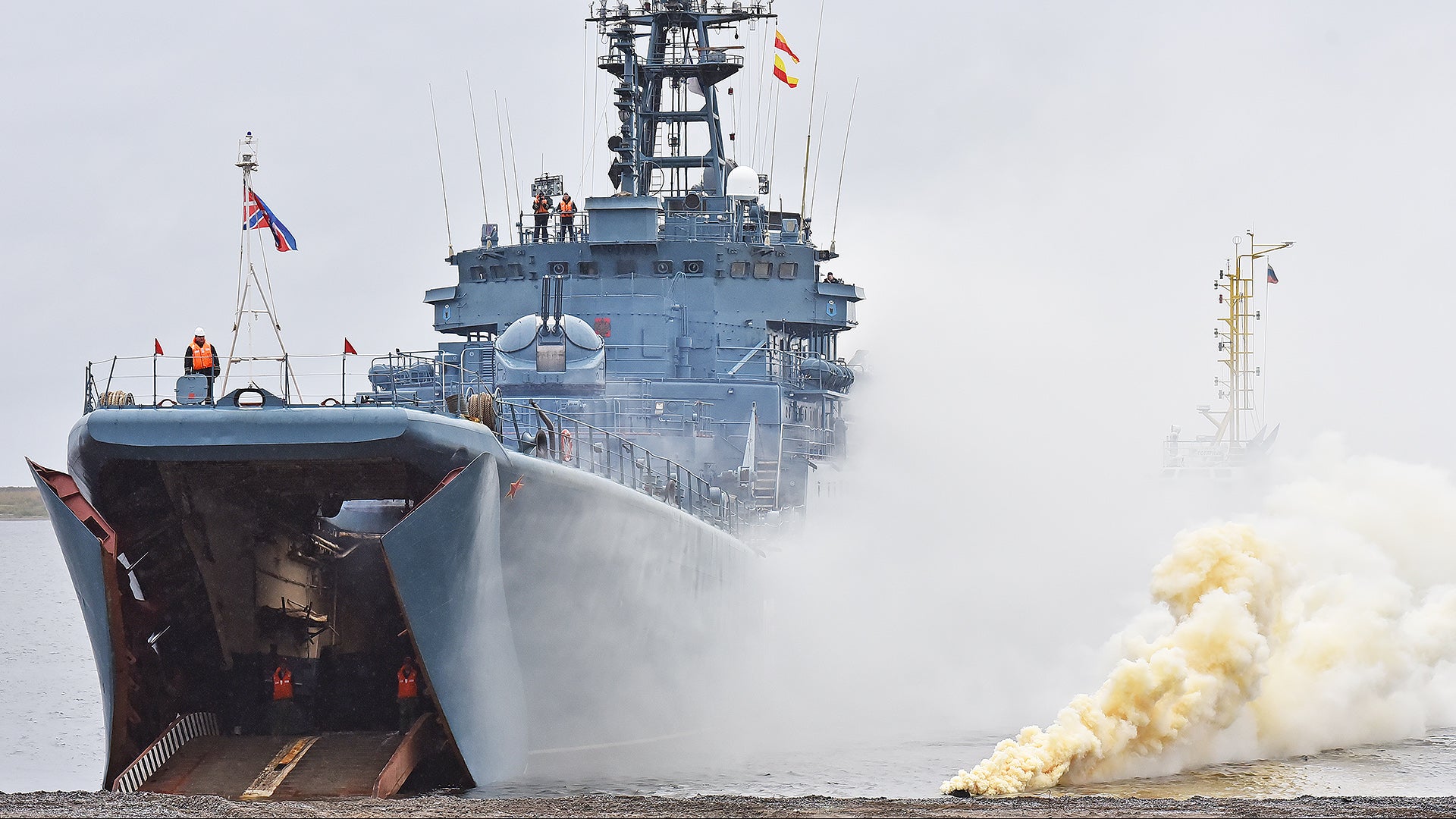A trio of Russian amphibious warfare vessels has left the Baltic Sea region, a day after three other similar landing ships departed the area. These ships’ final destinations are unknown, but concerns are swirling that these naval movements could be linked to the ongoing crisis between Russia and Ukraine. White House Press Secretary Jen Psaki said today that the Russians are already in a position militarily where they “could at any point launch an attack” on their western neighbor.
The Project 775 Ropucha class amphibious warfare ships Olenegorskiy Gornyak and Georgiy Pobedonosets, as well as the Project 11711
Ivan Gren class landing ship Pyotr Morgunov, were spotted sailing north through Denmark’s Great Belt strait earlier today. The Great Belt is one of a series of straits that connect the Baltic Sea and the North Sea. Three other Ropuchas, the Korolev, Minsk, and Kaliningrad, made this same trip yesterday.
The Ropucha class ships, which can each displace close to 4,100 tons with a full load, are Soviet-era landing ship tank (LST) type vessels that are able to carry as many as 10 main battle tanks or other heavy armored vehicles, 340 troops, 550 tons of cargo, or a mixture of all three. They have large clamshell doors in their bow allowing them to deposit these payloads right on the beach. They can also help attack targets ashore and defend amphibious landing operations with their onboard arsenal of automatic cannons, artillery rocket launchers, short-range surface-to-air missiles, and close-in defense systems.

The Ivan Gren is a much more modern LST design, with the first one only entering Russian Navy service in 2018, with a beach landing capability, as seen in the video below. These vessels, which displace around 6,600 tons with a full load, can carry up to 13 tanks or other heavy armored vehicles and some 300 troops at the same time. Their armament is more limited compared to that of the Ropuchas, but they have a variety of other improved capabilities, including a flight deck at the stern with associated hangars that is able to accommodate two helicopters.

The three that left the region today are all assigned to the Russian Navy’s Northern Fleet, headquarters in the country’s northwestern concern, and only arrived there in the first place on January 12th. Their appearance last week prompted Swedish authorities, who described the deployments as highly irregular, to send hundreds of troops and armored vehicles to the island of Gotland in the Baltic Sea.
Where the Northern Fleet ships, as well as the other three Ropuchas, which are part of the Russian Navy’s Baltic Fleet, are headed now remains to be seen. Though there has been nothing to substantiate it so far, there is widespread speculation that the vessels may be heading south on a voyage to the Black Sea, where they could be positioned to support a potential new large-scale Russian military intervention in Ukraine. Concerns have been building for months now that the Kremlin could be on the cusp of launching such an operation.
Amphibious operations directed at areas of southern Ukraine, especially those along the Sea of Azov, just to the north of the Black Sea, which is under Russian control already, could easily be one part of any new multi-pronged Russian intervention. Additional landing ships would be important assets to help secure beachheads and then continue the flow of forces through them. Last year, Russia demonstrated its ability to move smaller landing craft from its Caspian Sea Flotilla into this region to bolster its amphibious capabilities.

Of course, it remains unclear whether or not the Kremlin will ultimately decide to launch a new military operation targeting Ukraine. At the same time, for weeks, Russia has been building up forces in areas opposite its borders with Ukraine, as well as establishing the kinds of support structures necessary to sustain combat operations for an extended period of time should it choose to do so. There are now fears that Russian forces that are flooding into Belarus, ostensibly for major exercises with that country’s military next month, may well actually be heading there to be in position for an upcoming invasion.
“We’re now at a stage where Russia could at any point launch an attack on Ukraine,” White House Press Secretary Jen Psaki told reporters today.
At the same time, there is the possibility that the Northern Fleet vessels, at least, could be headed back to their homeports. They, along with the others, might be deploying to support other Russian operations, including in and around Syria, or exercises.
It should at least be clear soon whether they are headed north or south, even if their final destination remains uncertain.
Contact the author: joe@thedrive.com
